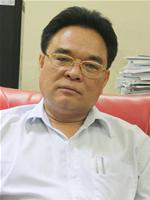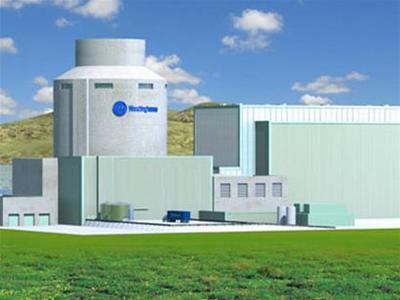INDOCHINA INTERNATIONAL CONSULTING CO., LTD
HO Add: 62L/36 Nguyên Hồng, Ward 11, Bình Thạnh District, HCMC - Vietnam
Biz Office Add: #48 Road No 11, Quarter 6, Hiệp Binh Chánh Ward, Thủ Đức, HCMC - Vietnam
®Source: http://viipip.com should be clearly quoted for any use of information extracted from our website.
Publication permit No: 60/GP-TTĐT , April 05, 2010.


Mr. Vuong Huu Tan.
The nation’s first nuclear power project will be debated and almost certainly approved during the National Assembly’s autumn session. Vuong Huu Tan, director of the Vietnam Atomic Energy Institute, talked with a newspaper about this great project.
Tan says the first unit of the nuclear power plant will go into service in 2020. Construction of the first turbine will begin in 2014 or 2015. Thus
|
The investor of the first nuclear power projects is the state power monopoly, Electricity of Vietnam (EVN).
Two separate plants are planned to be built on the coast of Ninh Thuan province. Each plant will have two reactor units.
The first plant will be based in Phuoc Dinh commune, Ninh Phuoc district and the second in Vinh Hai commune, Ninh Hai district.
The two first nuclear power plants will have a total capacity of 4000 MW. Each plant will cover 400 hectares.
The capacity of the largest power plant in Vietnam at present, the Hoa Binh hydroelectricity plant, is 1920 MW.
|
|
Ta Van Huong, head of the Energy Department at the Ministry of Industry and Trade, explains that “according to
“There is a foreign relations element. We have to consider political, social and cultural relationships and traditional cooperation in choosing our provider of nuclear technology.
“Financial assistance to
|

|
Since nuclear power was first given serious consideration, its projected cost has risen from USD 1500-1700 to USD 3500-3800 per kilo hour (KWh), said Ta Van Huong, director of the Energy Department under the Ministry of Industry and Trade at a Vietnam-China workshop on nuclear power on October 15.
At that cost per kilowatt hour, investment capital in each 1000 megawatt turbine will reach three to four billion dollars, three times the cost of an thermal power plant of the same scale. This is only estimation but the increase of investment cost is now a big challenge for
However, some officials still affirm that nuclear power plants will be cost-effective. Nguyen Hoai
In
“In the years to come, thermal-power will account for a big part of
|
- FDI capital continues to pour into Vietnam (6/11/2025 1:20:33 PM)
- Thanh Hoa receives good news: Preparing to have an additional industrial park of up to 470 hectares, creating jobs for nearly 30,000 people (6/11/2025 1:15:09 PM)
- Industrial Park Real Estate: Waiting for the New Generation of FDI (6/11/2025 1:10:15 PM)
- A wealthy Vietnamese city will have two special economic zones after the merger (6/11/2025 1:04:42 PM)
- 30 billion USD capital FDI in Việt Nam by 2025, a series of "ông big" races to expand the land fund (6/11/2025 12:55:26 PM)
- the 2nd largest city in the North will start construction on an international economic zone (6/11/2025 12:50:20 PM)
- Japanese giant Sumitomo continues to want to build an industrial park in the countrys fourth smallest province. (6/11/2025 12:40:45 PM)
- 3 foreign corporations want to invest billions of dollars in Ba Ria - Vung Tau (6/11/2025 12:34:30 PM)
- Lotte Group member starts construction of nearly 1,000 billion VND logistics center in the province with the most industrial parks in Vietnam (6/11/2025 12:33:26 PM)
- Forming a regional center for manufacturing spare parts and components (6/11/2025 12:24:08 PM)
- Vietnams first wafer factory is about to start construction (6/11/2025 12:19:09 PM)
- Dong Nai attracts foreign investors (6/11/2025 12:13:27 PM)
- Tay Ninhs largest industrial park welcomes a $150 million high-end knitted fabric factory project (6/11/2025 12:11:00 PM)
- (6/11/2025 12:09:10 PM)
- Vietnam will become a destination for Chinese investors in the future (11/6/2023 1:03:19 PM)

- FDI capital continues to pour into Vietnam
- Thanh Hoa receives good news: Preparing to have an additional industrial park of up to 470 hectares, creating jobs for nearly 30,000 people
- Industrial Park Real Estate: Waiting for the New Generation of FDI
- A wealthy Vietnamese city will have two special economic zones after the merger
- 30 billion USD capital FDI in Việt Nam by 2025, a series of "ông big" races to expand the land fund










 ADB: Vietnam’s 2009 GDP growth to be highest in South East Asia
ADB: Vietnam’s 2009 GDP growth to be highest in South East Asia MGM Grand Ho Tram: Vietnam’s First ‘Las Vegas Style’ Integrated Resort
MGM Grand Ho Tram: Vietnam’s First ‘Las Vegas Style’ Integrated Resort Nha Trang’s Twin Towers project licenced
Nha Trang’s Twin Towers project licenced Foreign investors still have good opportunities in Vietnam
Foreign investors still have good opportunities in Vietnam Sierra Wireless gets a foot in Vietnam’s ICT market
Sierra Wireless gets a foot in Vietnam’s ICT market